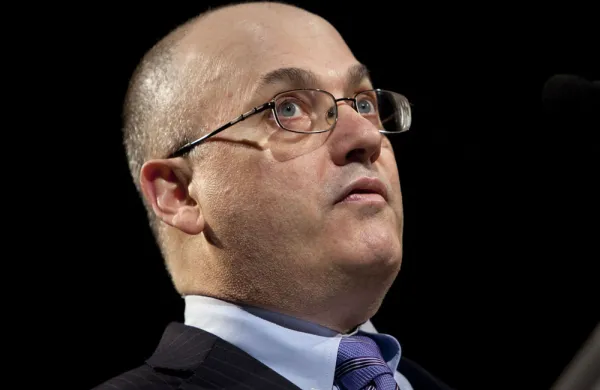The narrative of the bright-eyed high school graduate going into debt for college only to become unemployed and default has become all too familiar. But another demographic is struggling with the weight of student debt, and the consequences for them may be much more dire. While many grow increasingly concerned about their children’s financial futures, they might be overlooking how the same debt is affecting their parents.
As the amount of debt has ballooned to an average of up to $30,000 per student in the U.S., lawmakers — including some of those who just won office for the first time or were reelected in last week’s elections — have brought the issue to the fore. Democratic Senator Elizabeth Warren of Massachusetts has gotten the most headlines for her efforts to pass a student loan refinancing bill, while others including Republican Senator Lamar Alexander of Tennessee, the favorite for the Health Education Labor and Pension Committee chairmanship, have sought to attack the problem by reducing the amount of federal loans available in the first place.
But the rhetoric has largely focused on affordability of college for the so-called traditional student — a recent high school graduate with high ambitions — and the financial impact of carrying loans that can’t be forgiven through bankruptcy throughout adult life. The truth, however, is much more complicated, as both lawmakers and many retiring seniors will soon discover.
“There is no statute of limitations,” says Heather Jarvis, a lawyer and student loan expert based in Wilmington, North Carolina. “The government pursues borrowers to the grave.”
People over 65 have increasingly suffered financial hardship thanks to debt, though it typically comes in the form of mortgages or high credit card balances. Although the percentage of debt following retirees into their golden years that comes from student loans is still relatively small — about 3 percent for households headed by someone over 65 — the numbers have been growing at an alarming pace.
The amount of student debt held by retirement-age people jumped from $2.8 billion in 2005 to $18.2 billion in 2013, according to a recent study conducted by the Government Accountability Office. But what are people who should be preparing to enjoy retirement doing with an estimated median student debt load of $12,000?
The answer is complicated. Some observers point to so-called Parent PLUS direct federal loans that people sometimes take out on behalf of their children, but the GAO report suggests that most student debt held by retirees is their own — either left over from a college experience decades earlier or incurred more recently by people returning to school. (The latter is thanks in part to the Great Recession and the subsequent slow-growth economy, which sent many older people back to school in anticipation of needing a second career.) Because of the way student loans are marketed and presented — both by private lenders and by the government — experts don’t think many borrowers really know what they’re getting themselves into.
“A lot of people sought out education or reeducation as a way of rebuilding their skill set, and may not have been fully aware of the cost of the debt and how it would impact them going forward,” says Richard Gotterer, a senior financial adviser at Wescott Financial Advisory Group in Miami.
Student loan payments can be tough for graduates to make, especially if they don’t find gainful employment right away. But for a retiree who has little to no income and may be getting by solely on a pension or Social Security benefits, student debt can mean living below the poverty line.
“The trend of retirees holding college debt could be incredibly impactful to a generation that is already significantly underfunded for retirement,” says Brian Menickella, a managing partner of Beacon Group of Companies, a King of Prussia, Pennsylvania–based insurance and investing advisory firm.
The biggest concern for this group is that the income they do have can be garnished if they don’t make any loan payments for more than a year. Last year, 27 percent of borrowers between the ages of 65 and 74 had defaulted student loans; the number rises to 50 percent among people older than 75, according to the GAO. That’s compared with defaults among only 12 percent of borrowers between the ages of 25 and 49. While the latter group might have trouble buying a home or making car payments thanks to a default, the former is having its Social Security checks diverted. The number of retirees whose checks have been garnished to pay off loans has skyrocketed over the past decade, rising from 31,000 in 2002 to 155,000 in 2013.
It doesn’t have to be this way, says Jarvis. The truth that is often buried is that federal loans borrowed for one’s own education are often eligible for income-based repayment plans, and many are also qualified for forgiveness programs if the borrower spent a certain amount of time in a public service career. A more recent program also allows borrowers to pay as they earn, capping repayment at 20 years.
Part of the problem, according to Jarvis, is that most borrowers aren’t aware of these opportunities. “My whole business is keeping up with the crazy, convoluted rules,” she says. “It’s very difficult for even sophisticated, intelligent people to navigate, and the rules change quite often.”
The amount of new student debt being taken out by people of all ages continues to grow. Experts like Jarvis and Gotterer, however, are optimistic that the increased focus by lawmakers and advocacy groups on making the system more transparent may save future generations of retirees from a similar fate. “While student debt has exploded in the last decade or so, there’s also a greater emphasis on what student debt is and what it means,” says Gotterer. “There’s more education to students who are taking out loans today and they have more options.”
It’s hard to know whether the current reliance of students on federal aid may lead to a spike in retiree debt numbers down the line. But some experts are concerned that in the meantime, retirees and the financial systems on which they rely may be in trouble. The Beacon Group’s Menickella is worried about a potential “domino effect” on the economy, at least in the near term.
“Many of the baby boomers entering retirement were the earliest adopters of the mentality that everybody should go to college, so we could be looking at a period of ten to 15 years where their defaults and other subsequent issues begin to mount,” he says.
While the growing plight of retirees with student debt has gone largely unexamined by lawmakers, the focus on younger students could end up paying off for everyone in the long run if it means they gain more protections and are more careful about how they borrow.






